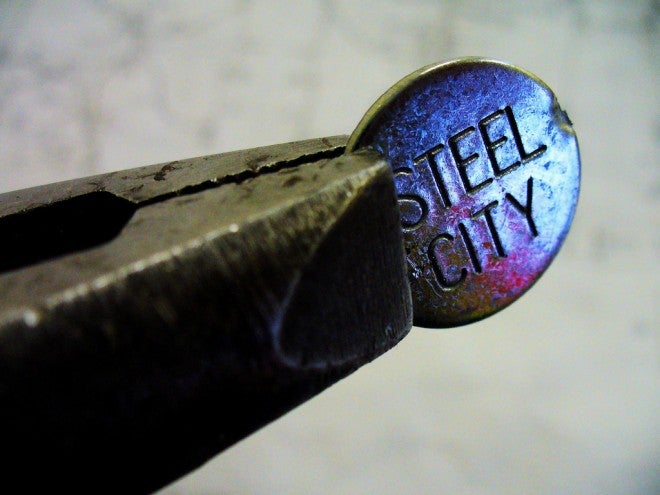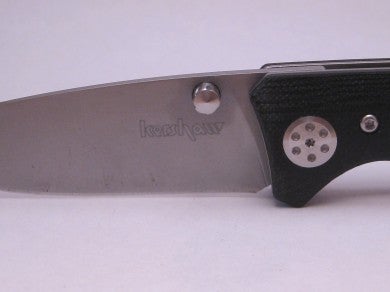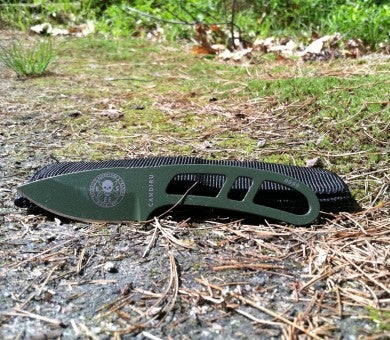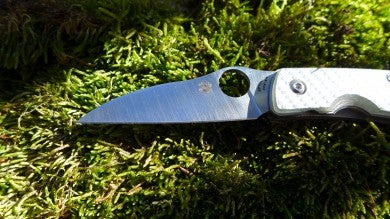How to Choose a Knife Steel
Tony Sculimbrene 11.17.13

This is not a steel primer. You can find that here (Part 1, Part 2, and Part 3, each about 2,000 words). This is about picking a steel for a given task. Honestly the primer is helpful if you want to really dive in, but if you want to know the simple answer, then this is the place to start.
First, there is no such thing as “the best steel.” Asking which steel is best is like asking which medicine is best; it depends on the application. This is why I’ve broken down the recommendations by trait and application.
Second, knife steels are all about a compromise. As Sal Glesser once wrote over on the Spyderco Forum: corrosion resistance, toughness, hardness, and price – pick three. You can get something that does everything, that resists rust, that is tough as taffy, and his hard as rock, but it will cost you…a ton. SM100 (Nitinol 60) is probably as close to the perfect blade material as we have right now, and it is staggeringly expensive. Some of the nitrogen steels like Elmax are also close, but they are also pretty expensive. Understanding the balance between the three traits is key to picking the right blade steel.
Corrosion Resistant Steels
If you are doing a lot of tasks that involve liquids, such as food prep or hunting, you should probably prioritize corrosion resistance. If you are working in and around water, then you probably need to step up to one of the super corrosion resistant steels. Additionally, if you EDC something in a hot or moist environment, you probably need something with good corrosion resistance.
I have found that corrosion resistance means a few things. It’s not just rust, but staining as well. You probably already know that rust can impact a knife’s performance, but so can stains. For example, when I was reviewing the Kershaw Injection, the bead blasted 8Cr13MoV took a very pronounced stain. That stain, in turn, impacted how smoothly and easily the knife sliced, especially through fibrous materials like meats, cardboard, and rope. Be aware of that.
Steels that I have found to have good corrosion resistance include VG-10, the SAK steel 1.4116, M390, Elmax, Duratech 20CV, N690, Carpenter’s BD-1, and S30V and S35V. I also like Sandvik’s 14C28N, which is a newer steel found almost exclusively on USA Made Kershaws. It is quite good. If you need something more than that in terms of corrosion resistance, you are probably going to have to step up to a specialty steel like H1, XT15, or even carbon deposited Titanium. Additionally, the steel’s finish impacts corrosion resistance. A bead blast finish is more corrosive than a mirror finish as the grains of the steel are more exposed.
Tough Steels
If you are doing a lot of chopping or prying you should probably invest in tough steel. Remember, toughness is the ability to resist chipping or breaking. It is, in a way, the opposite of hardness. A tough steel will bend but not break. It will need a great deal more sharpening and stropping than a hard steel. As a simple example, taffy is tough while ice is hard. Taffy will almost never shatter, but it will bend pretty easily. Conversely, ice will shatter but never bend. Steel works the same way. Tough steels don’t chip; hard steels do.
For tough steels I like 154CM (though it is also relatively hard), M4 (both hard and tough), 1095, 5160, SK-5, and AUS-8. 3V from Crucible has a great reputation as a uber tough steel, but it is still premium priced. INFI has a great reputation, but I have never used it. My favorite tough steel that I have used is probably 1095, especially the 1095 as heat treated by ESEE and Rowan. This steel is positively brutal; it can be chopped, hacked, pried, and hammered with no real impact. I also like SK-5, which is noticeably softer than 1095 but easier to sharpen. A lot of tough steels are non-stainless, or carbon steels, so they have even less than normal corrosion resistance.
Hard Steels
People have become obsessed with hardness, almost at the expensive of everything else. The super steel arms race seems focused solely on higher Rockwell numbers (expressed as HRc). We are seeing steels like ZDP-189 and M4 that have HRc numbers in the mid to high 60s on production knives, and in the custom world we have REX 121, which is hard enough to work like a carbide. I do not think there are many tasks that folks do on a regular basis that need such hard steels. If you don’t like sharpening, then hard steels will help, but this is a Faustian bargain. When you do actually have to put an edge back on a blade, you will pay dearly in terms of time and effort.
Hard steels include the aforementioned ZDP-189 and M4, as well as Elmax, M390, Carpenter’s CTS-XHP, and CTS-204P. Crucible’s S30V, S35VN, S90V, and S110V are all very hard as well, though many choose to leave S30V softer than recommended to address problems with chipping. D2 is probably the most widely used, very hard steel. Additionally, ATS-34 and 154CM can get quite hard.
Conclusion
If you aren’t afraid of sharpening, then you can get away with a cheaper steel. Hardness is probably the most expensive trait to prioritize as you can get very tough and very corrosion resistant steels for cheap, but aside from D2 all of the very hard steels are pricey. As my sharpening skills have improved, I have enjoyed AUS-8 and even the budget steel 8Cr13MoV much more. In particular, some formulations of 8Cr13MoV are very good (like those used by AG Russell), and some are very bad (like those used in bead blasted Kershaws or Spydercos). Chemistry is part of the equation, as is finish and grind.
If price is no object, then its probably worth it to try a very hard steel. I like CTS-XHP, described as a full stainless D2 or a very hard 440C. I also like ZDP-189 and M4. Both ultra hard steels allow for very thin grinds and make excellent slicers. In choppers and hard use tasks, I am partial to 1095. It has been around forever for a reason. A good heat treated and coated 1095 blade is a miracle when doing dirty and tough tasks.
There are few steels out there that are just bad. 420 stainless is bad, though as heat treated by Buck is actually is quite good (very much like 440C or even VG-10). I have found that 440C is merely okay. Any 440 grade lower (440B and 440A) should probably be avoided. I have also found that VG-10 holds an edge poorly. It is easy to sharpen, so if you are good at the stones, then that’s not such a drawback.
Overall Choice for EDC: ZDP-189
Overall Choice for Hard Use: 1095 (or 3V if you have the budget)
Best Buy: 14C28N


